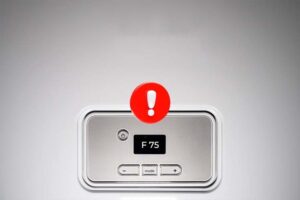Table of Contents
Key Takeaways
- Cavity wall insulation is crucial for home energy efficiency
- Proper installation is essential to avoid common problems
- Damp issues and cold spots are frequent concerns
- Regular checks can prevent major complications
- Professional help is vital for installation and repairs
Is your cavity wall insulation not performing as expected? Are you noticing damp patches or feeling cold spots where there shouldn’t be any? Several quick fixes can resolve these issues.
In this guide, we will explore the Cavity Wall Insulation and uncover why these issues happen and how you can fix them through DIY.
What is Cavity Wall Insulation?
Your home’s cavity walls are just like a protective sandwich – two layers of brick with a space (the cavity) in between. When we talk about cavity wall insulation, we’re talking about filling this space with special material to keep your home cosy and reduce heat loss.
Is Your Home Suitable?
Before diving into problems, let’s check if your home is suitable for cavity wall insulation:
- Was your house built after 1920?
- Does it have cavity walls rather than solid walls?
- Is your external wall in good condition?
If you answered yes to these questions, your home might be a good candidate for this energy-saving retrofit.
Air Source Heat Pump Grants
Common Cavity Wall Insulation Problems
Below are the common problems households might face with their wall insulation. If you have recently insulated your cavity walls, you can contact the Cavity Insulation Guarantee Agency (CIGA) for claims.
1. The Dreaded Damp Issue
Dampness can make itself at home in your walls when cavity wall insulation isn’t installed correctly. Here’s what you need to know:
Why Does Damp Occur?
- Poor installation is letting moisture settle
- Wind-driven rain penetrating the external wall
- Inadequate ventilation leads to damp conditions
Signs to Watch For:
- Black mould is appearing on internal wall surfaces
- Persistent dampness in specific areas
- Musty smells and mould growth
2. The Cold Spot Mystery
Have you noticed areas of your wall that feel colder than others? These cold spots might indicate that your insulation fails to provide even coverage. Common culprits include:
- Wall ties are disrupting the insulation.
- Settling of material over time.
- Cases where insulation is worse than no insulation.
What are Common Cavity Wall Insulation Problems?
So, let’s roll up our sleeves and dive into solutions that really work. After all, your home deserves the best wall insulation experience possible.
How to Detect Issues with Cavity Wall Insulation?
Before calling in the pros, here’s your homeowner’s detective guide to common issues:
Look Out For Damp Patches
Listen up, fellow homeowner. Here’s what to look for:
- Mysterious damp patches appearing on walls
- Tell-tale signs of penetrating damp
- That unmistakable musty smell that screams “damp and mould”
Check the Wall’s Temperature
Feel your walls. If you notice:
- Random cold spots that shouldn’t be there
- Uneven heating across rooms
- Areas where insulation fails to do its job
You might be dealing with a case of insulation causing inconsistent performance – where some areas are actually worse than no insulation at all.
When to Call the Experts
Sometimes, you need the cavalry. Here’s when to call professional insulation installers:
For New Installations
Looking to install cavity wall insulation? Here’s what pros will do:
- Thoroughly assess if your home is suitable for cavity insulation
- Choose the right type of insulation material
- Ensure proper installation.
For Existing Problems
- When cavity wall insulation can cause issues, experts can:
- Evaluate whether to remove the insulation or not
- Address persistent damp issues
- Fix problems where insulation is installed incorrectly
DIY Solutions That Work
Here are some possible fixes for your cavity wall insulation that may not have cold spots anymore. Following these fixes, we can ensure you don’t get your cavity wall insulation removed.
1. Dealing with Damp
When damp problems strike, here’s the battle plan:
- Professional assessment of damp conditions
- Fixing any compromised external wall issues
- Addressing wind-driven rain penetration
- Considering insulation removal if needed
2. Tackling Cold Spots
Got a patchy performance? Here’s how to fix it:
- Check and remove over-bonded beads
- Address settling polystyrene beads
- Fix gaps where insulation material has shifted
3. Structural Solutions
For those serious cavity wall insulation problems:
- Expert evaluation of wall cavity condition
- Assessment of wet insulation impact
- Professional repair of any existing problems
How to Prevent Cavity Wall Issues?
Want to avoid problems further down the line? Here’s your maintenance checklist:
Regular Checks
- Monitor for early signs of dampness
- Watch for new cold spots
- Keep an eye on your energy bills
Professional Maintenance
- Annual inspections by a qualified installer
- Regular assessment of insulation methods
- Timely fixes for any issues can occur
Final Thoughts
Remember: It’s always better to address these issues early rather than wait for problems further down the line. If you’re noticing any of these signs, don’t hesitate to get professional advice – your home’s health depends on it.
- Monitor your walls regularly
- Act quickly on any signs of problems
- Work with certified insulation installers
- Keep up with maintenance
- Don’t hesitate to seek professional help
Remember: A well-maintained cavity wall insulation system is like a cosy blanket for your home – it keeps you warm, saves money, and protects your property. Treat it right, and it’ll serve you well for years to come.
Frequently Asked Questions
Well, here’s the scoop. People are opting for cavity insulation removal for several compelling reasons:
Persistent Moisture Problems
- When cavity wall insulation becomes a moisture magnet
- If damp issues keep cropping up despite repairs
- When black mould becomes an unwelcome houseguest
Installation Gone Wrong
- Cases where homes were unsuitable for cavity wall insulation
- Poor installation leads to ongoing problems
- When insulation is worse than no insulation at all
Property Damage Concerns
- Failed cavity wall insulation causing structural issues
- External wall deterioration
- Internal decorative damage from dampness
Finding the right installer is like finding a good doctor – you want someone qualified, experienced, and trustworthy. Here’s your checklist:
Check Their Credentials
- Look for certified insulation installers
- Verify membership with the cavity insulation guarantee agency
- Ask for specific experience with your type of insulation
Do Your Homework
- Request references from previous cavity wall insulation installations
- Check reviews and testimonials
- Ask about their installation of the cavity wall experience
Ask The Right Questions
- How do they assess if a property is suitable for cavity wall insulation
- Their approach to different insulation methods
- What guarantees do they offer for their work
Playing detective with your walls? Here are the telltale signs that your cavity wall insulation problems need attention: Damp patches appearing on walls, mould growth in corners or behind furniture, and deteriorating external wall condition are the common signs. For physical signs, cold spots, increasing energy bills and unusual patterns of dampness are common.
Battling with dampness in your walls? Here’s your action plan to tackle this moisture menace:
Immediate Actions
- Identify the source of penetrating damp.
- Check external drainage and guttering.
- Look for signs where wind-driven rain might be getting in.
Professional Assessment
- Get an expert to check if your home remains suitable for cavity wall insulation.
- Evaluate whether you need to remove the cavity wall insulation.
- Assess the condition of your wall cavity.
Long-term Solutions
- Fix any existing problems with external walls.
- Consider whether you need different types of materials.
- Implement proper ventilation solutions.



